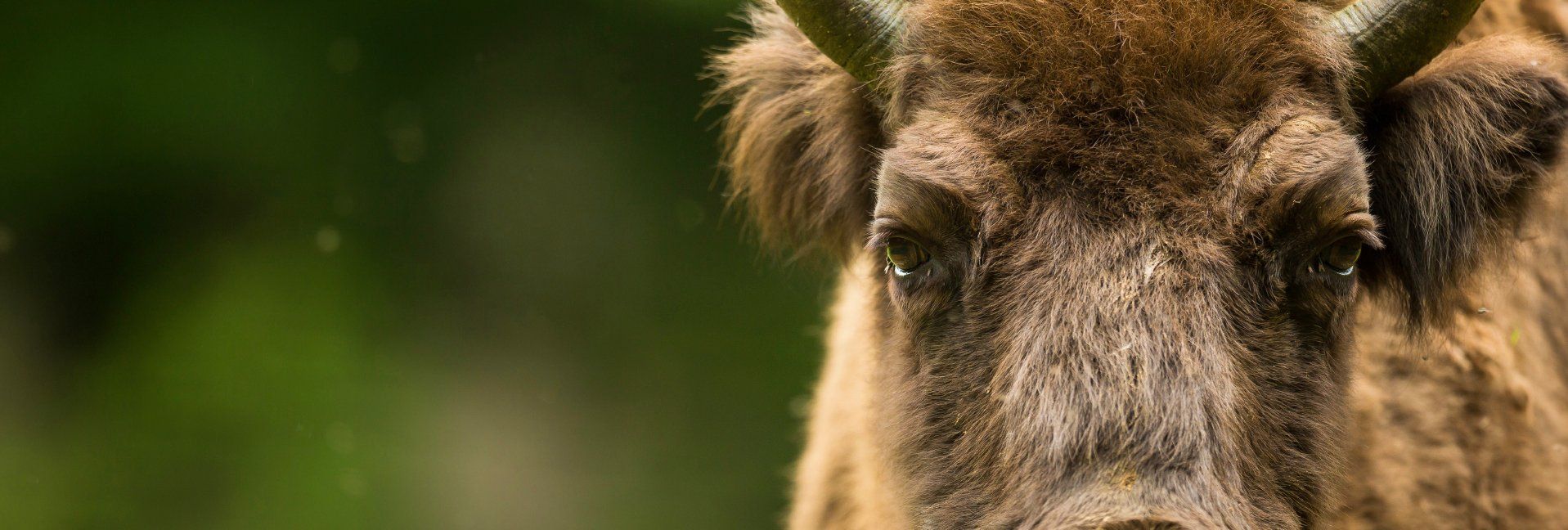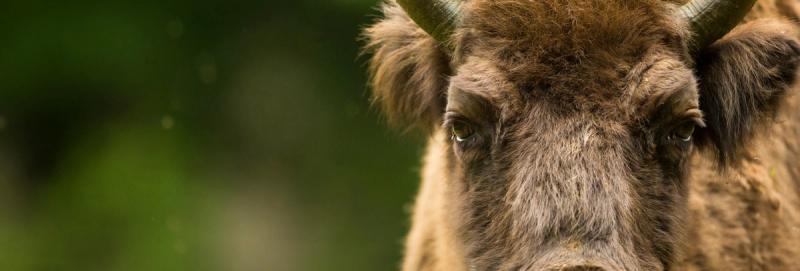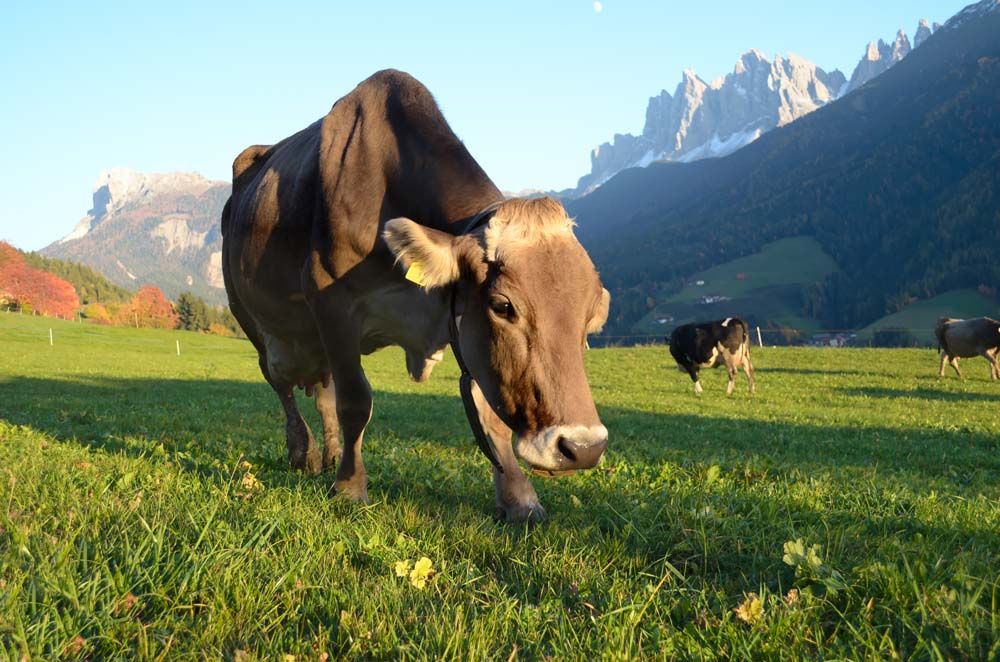The Key to Raising Backyard Bison


Large and impressive, with a distinctive appearance that defines “the American West,” bison are an exciting type of alternative livestock, but they also represent a unique way to add some productivity to your farm through a variety of products. Let’s look at a few things you need to know before you think about raising bison.
Bison are one of the great grazing mammals of the world. With an estimated 60 million head at the start of the 19th century, bison numbers plummeted to dangerously low levels over the next several decades, but have since recovered somewhat

First—know the terminology!
One of the first steps is to get a firm understanding of the lingo, particularly the bison vs. buffalo issue. The animal we’re discussing here—the one that dwells on the prairies of the West—is technically an American Bison—not a “buffalo” as people commonly think.
It’s a challenging situation, because the incorrect “buffalo” term has been used for so long and is so widespread that it has actually come to mean “American Bison” (as in the song Home on the Range).
Buffalo and bison are two distinct members of the Bovidae family, and the term buffalo was applied to the bison by early North American explorers who noted similarities between this new animal and the African and Asian buffalos they were already familiar with.
Understand their meat
Bison are truly grazing machines, transforming grass into quality, nutritious meat with a unique flavor. Bison tend not to build fat stores in the same way that cattle do, so bison meat contains little marbling. The result is a very lean meat.
But that leanness also comes with the benefit of containing fewer calories than a meat with a higher fat content—plus, bison meat is high in protein. It’s a way to enjoy more meat for fewer calories—and far less fat—than beef. But what about taste? Marbled beef is generally prized because the fat improves the taste and quality of the meat, but if bison meat lack this feature, does that affect the flavor?
Taste is subjective, of course, but many folks love bison meat. It tends to be a bit sweeter than beef, but is less greasy (that low fat content again), and the so-called wild “gaminess” taste isn’t a factor. The texture of bison meat is also praised.
And remember, while meat represents a large portion of a bison value, there are other by-products, like bison leather, that may provide additional income.
Understand the animal
What would you guess is the largest land animal in North America? Moose? Grizzly bear? Nope—it’s the bison.
With large males weighing in excess of 2000 pounds (though market weight is more in the range of 1200 pounds), and standing over six feet tall, it’s a truly massive animal, with both males and females sporting horns.
Thus, bison farming requires something of a different mindset than other types of livestock. Undomesticated, bison simply don’t care much for being handled. When crowded, they become tense and more inclined to panic than other livestock. For instance, compare the way horses are generally controlled by handlers. Cattle are often controlled and maneuvered from a distance, directed and guided by corrals and by humans.
Bison are a step beyond this; they require even slower and more careful handling to keep them calm, and some farmers recommend interfering with their daily life as little as possible, which means keeping handling to a minimum.
Understand the space requirements
Bison need room. Don’t think you can simply make a go of bison farming on a small-scale hobby farm with a half-acre lot. While the exact acreage needed will depend on the quality of your land, you may need to figure on several acres per head, so a herd of twenty bison could easily demand sixty acres of grazing land or more.
Understand the proper infrastructure
Don’t assume that you can just bring home a herd of bison to your farm and turn them loose in your preexisting infrastructure. Bison require fencing that is stronger and taller than what you probably already have in place.
The National Bison Association recommends that bison fencing be at least six feet tall, as bison are athletic jumpers. You’ll also likely need a system of bison-safe corrals and chutes in order to work with them when you do need to perform veterinary care or other routine handling needs. It’s critical to remember that even bison raised in a contained setting are not truly domesticated; some recommend installing bison fencing that can be climbed easily by human handlers.
Understand their self-reliance
Despite the infrastructure, space, and handling challenges, bison farming represents the chance raise a type of livestock that, for the most part, prefer to be self-reliant. As long as your animals have adequate grazing land, plenty of water, and enough members in the herd to satisfy their social requirements, they likely won’t need to be handled all that often.
Keeping bison happy and content is one key to keeping them under control—you’re essentially making it their idea to stay inside the fence. Even during the winter when hay may be needed to supplement their diet, bison will also attempt to find grass under the snow.
Thanks to their thick coats and efficiency at utilizing energy from their forage, bison are naturally hardy and can generally handle tough winters but are equally suited to the warm summers of the American plains.
Hands-On Tips from a Bison Breeder
Scott Benjamin has raised bison for 42 years, so he knows a thing or two from actual experience. Scott and his wife Diane operate their family farm just south of the Minnesota border along Little Swan Lake in Iowa, along with a winery, B&B, and entertainment venue.
“If you are thinking about raising bison there are some things to consider even on a small scale,” Scott advises. “You need to have a facility to handle them safely for you and also the animals, especially when you need to separate or get them loaded into your trailer.”
A normal enclosed livestock trailer works fine, he has found. “They tend to panic when you shut them in the trailer, but once they have a few minutes most will settle down and travel easily.”
Make sure you have your winter feed needs covered early. Some years hay gets very expensive by the end of the winter, he says.
“Then, make sure you have a locker that is capable of—and interested in—doing your processing for you. Not all of them will take on bison.”
If you are going to have more animals than you can consume, Scott says, then the marketing of the rest is totally up to you. “The demand is there, but you have to find it. It’s not like you can call the bison buyer.”

Tags:Country Critters

Acreage Life is part of the Catalyst Communications Network publication family.














